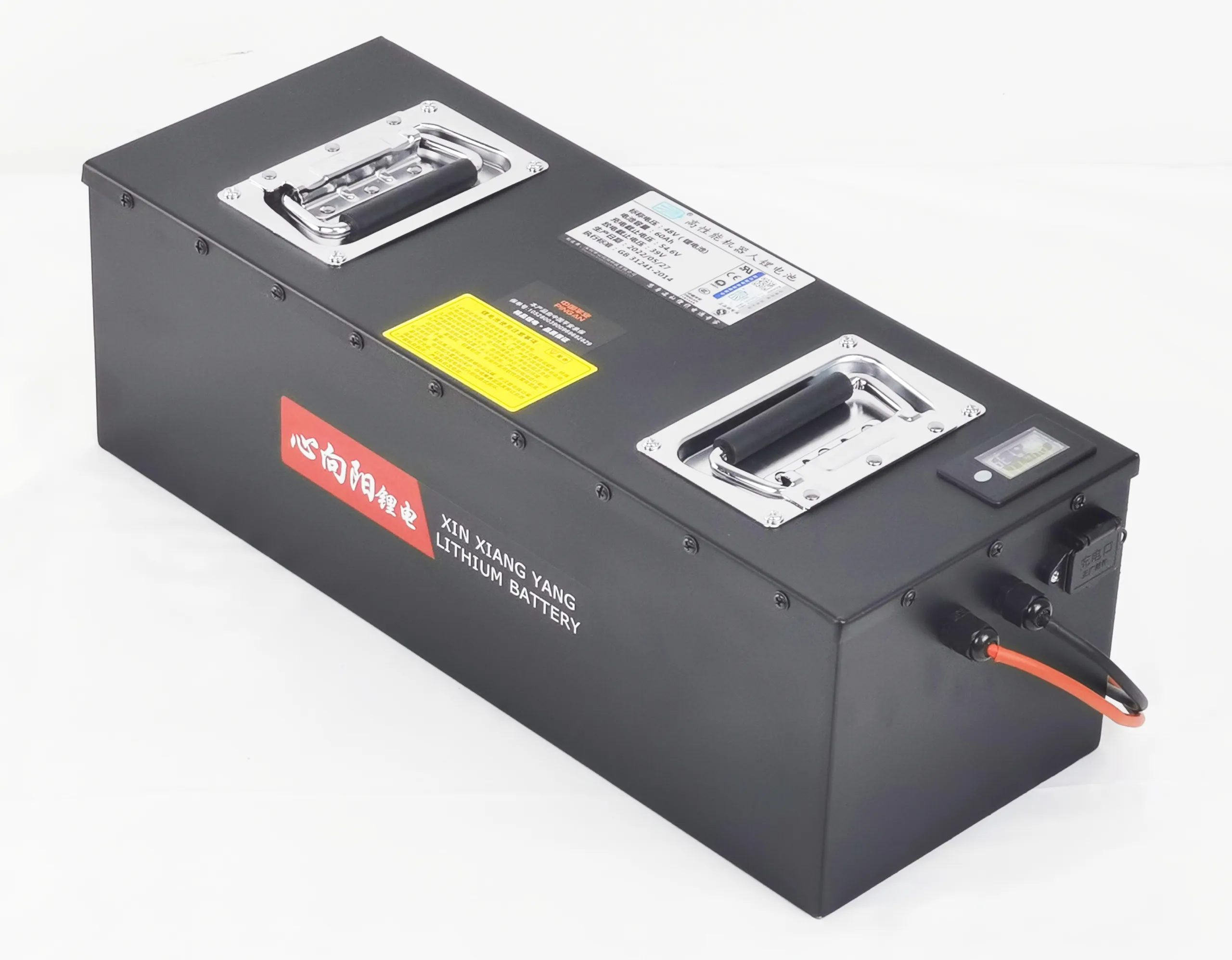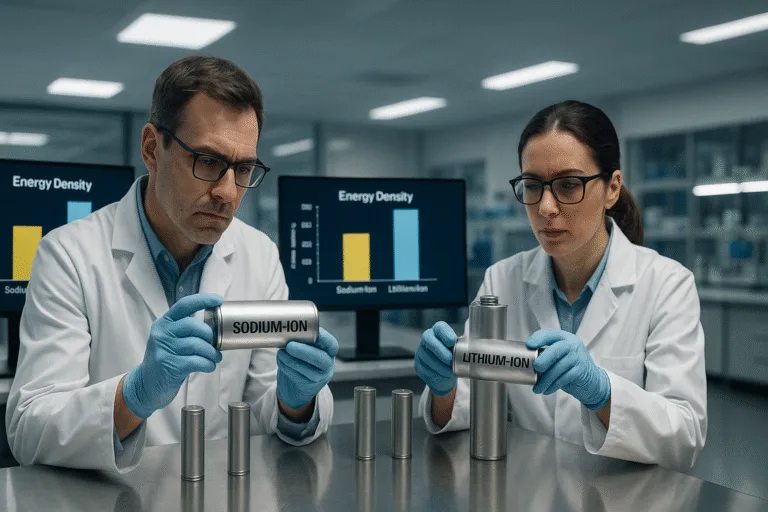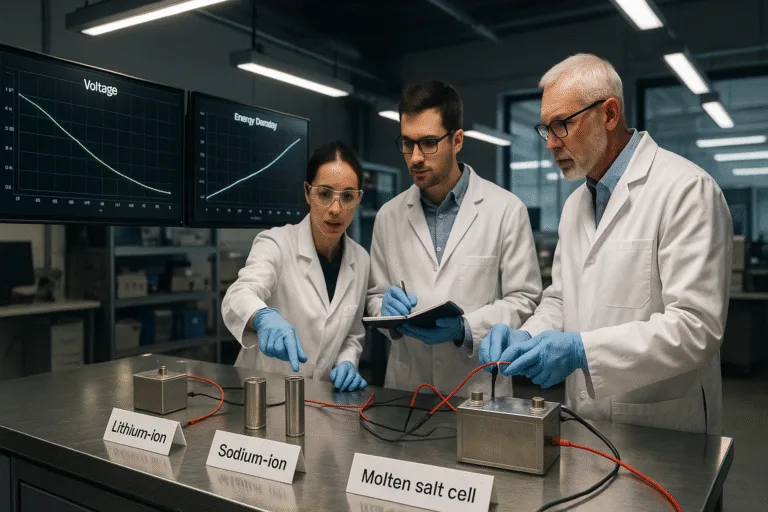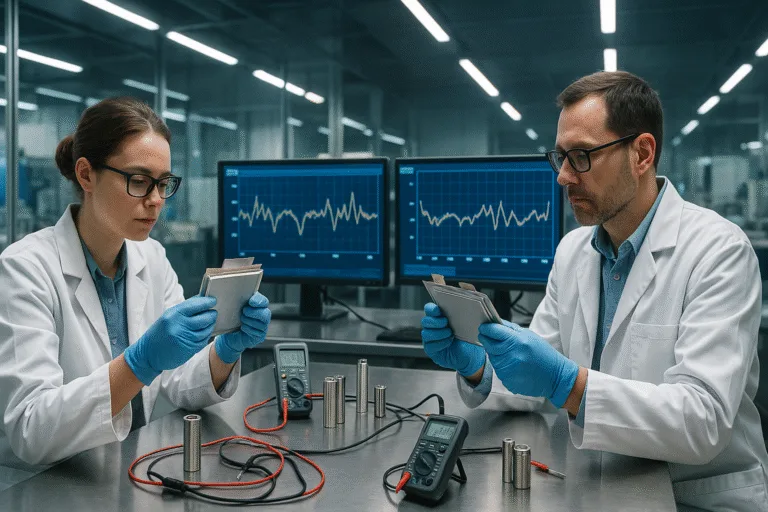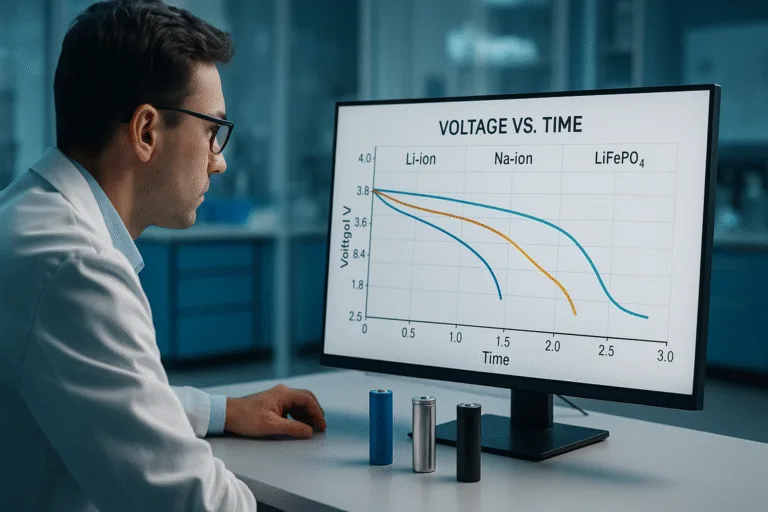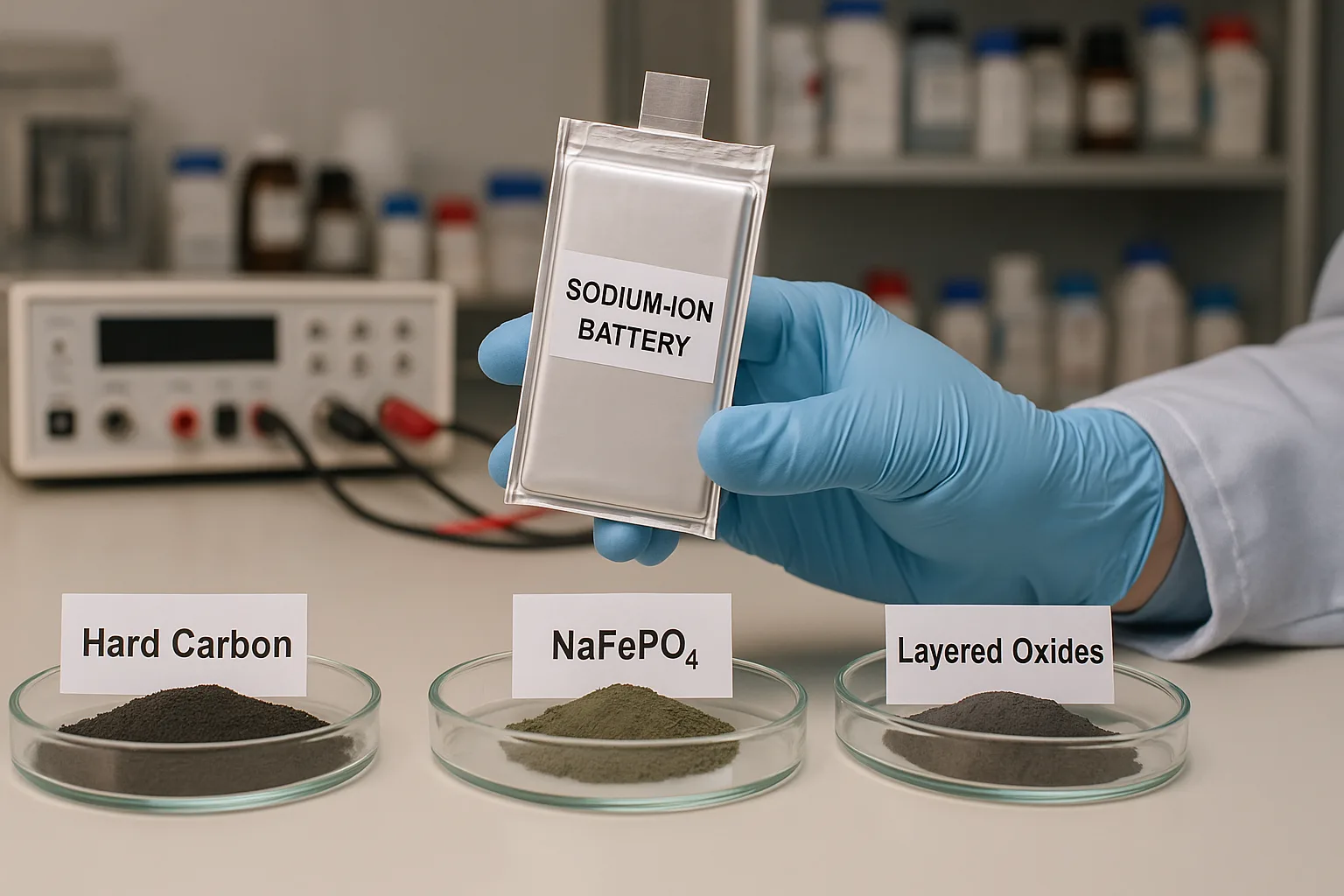
Curious about what powers a sodium-ion battery at its core? It all comes down to the materials used in the anode and cathode—two components that define battery performance, safety, and cost.
Sodium-ion batteries commonly use hard carbon as the anode material and sodium-based layered oxides or polyanionic compounds like NaFePO₄ as the cathode. These materials are selected for their compatibility with sodium ions and long-term stability.
I’ve worked with engineers evaluating alternative chemistries—understanding materials is the first step toward performance optimization.
What Is a Typical Anode Material in Sodium-Ion Batteries?
Anode materials are critical to storing and releasing sodium ions1 efficiently.
Hard carbon2 is the most commonly used anode material in sodium-ion batteries due to its ability to accommodate large sodium ions and maintain structural stability over many charge cycles.

Why Hard Carbon Works
Unlike lithium, sodium ions are too large to intercalate easily into traditional graphite structures. Hard carbon solves this:
- Amorphous structure: Allows for sodium ion storage in both interlayer spaces and pores.
- Thermal stability: Withstands repeated cycling and high-temperature conditions.
- Low voltage profile: Improves energy efficiency in full-cell designs.
| Anode Material | Sodium Compatibility | Key Advantages |
|---|---|---|
| Hard Carbon | High | Durable, scalable, cost-effective |
| Graphite3 | Low | Only suitable with additives or modified structures |
| Tin-based (Sn) | Medium | High capacity, low cycle life |
Hard carbon remains the current industry standard for balancing performance, cost, and reliability.
Why Is Graphite Used in Sodium-Ion Batteries?
You may be surprised to hear graphite is still being considered in sodium-ion battery research.
Graphite has limited use in sodium-ion batteries because it cannot efficiently store sodium ions in its natural state. However, modified graphite structures or co-intercalation4 with solvents can improve sodium compatibility.
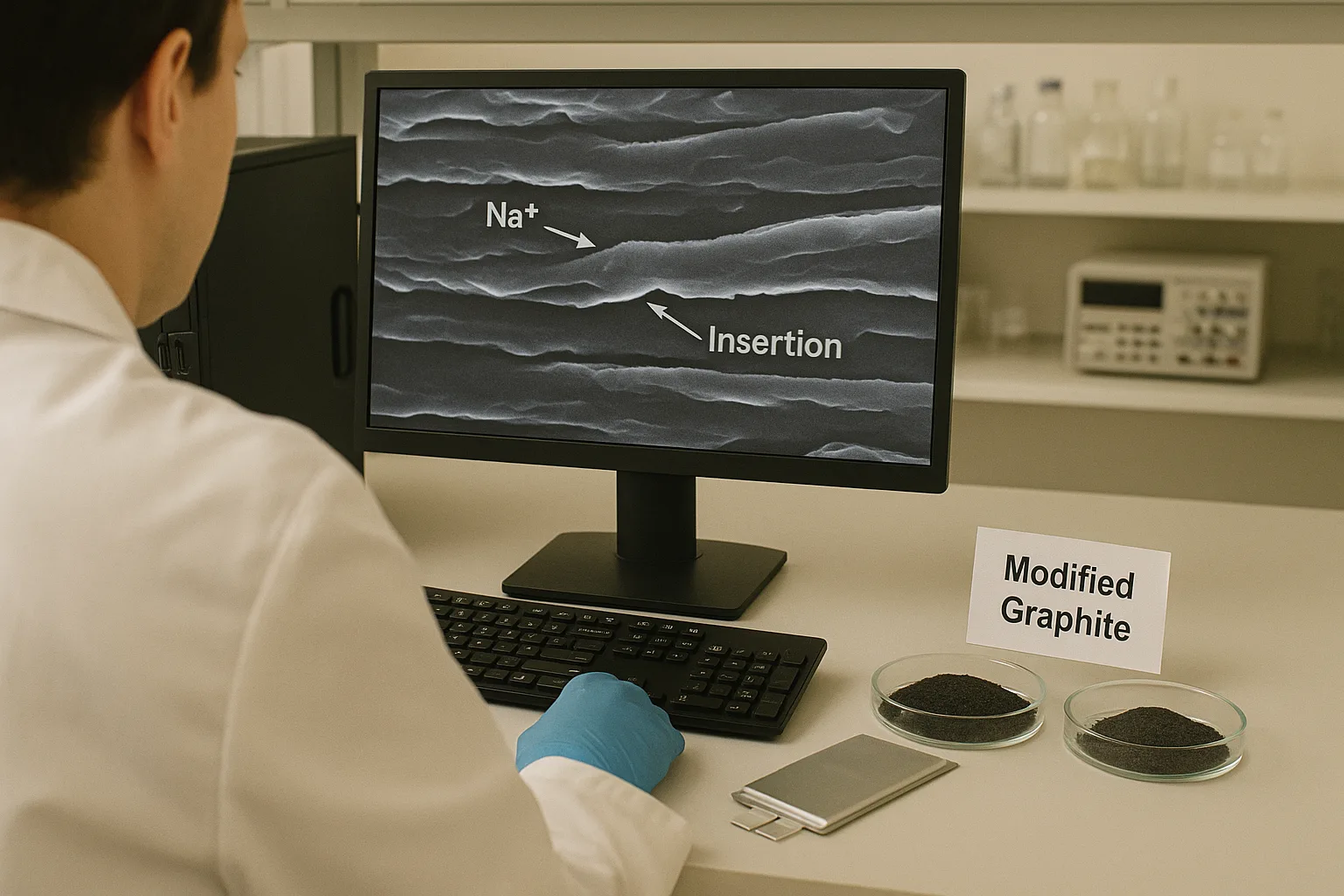
Graphite’s Role in Sodium-Ion Development
In lithium-ion batteries, graphite is the go-to anode. But for sodium-ion:
- Natural graphite fails: Sodium ions are too large to fit between graphite layers.
- Solvent co-intercalation4: Certain electrolytes allow sodium to intercalate temporarily.
- Research continues: Scientists are exploring expanded or doped graphite to improve compatibility.
While graphite isn’t widely adopted for sodium-ion systems yet, it remains under active development.
What Is the Role of Hard Carbon in Sodium-Ion Battery Design?
Want to understand why hard carbon is a key enabler in sodium-ion cells?
Hard carbon plays a crucial role in sodium-ion batteries as it offers both short-range order and random defects that allow large sodium ions to insert and extract reversibly without structural breakdown.
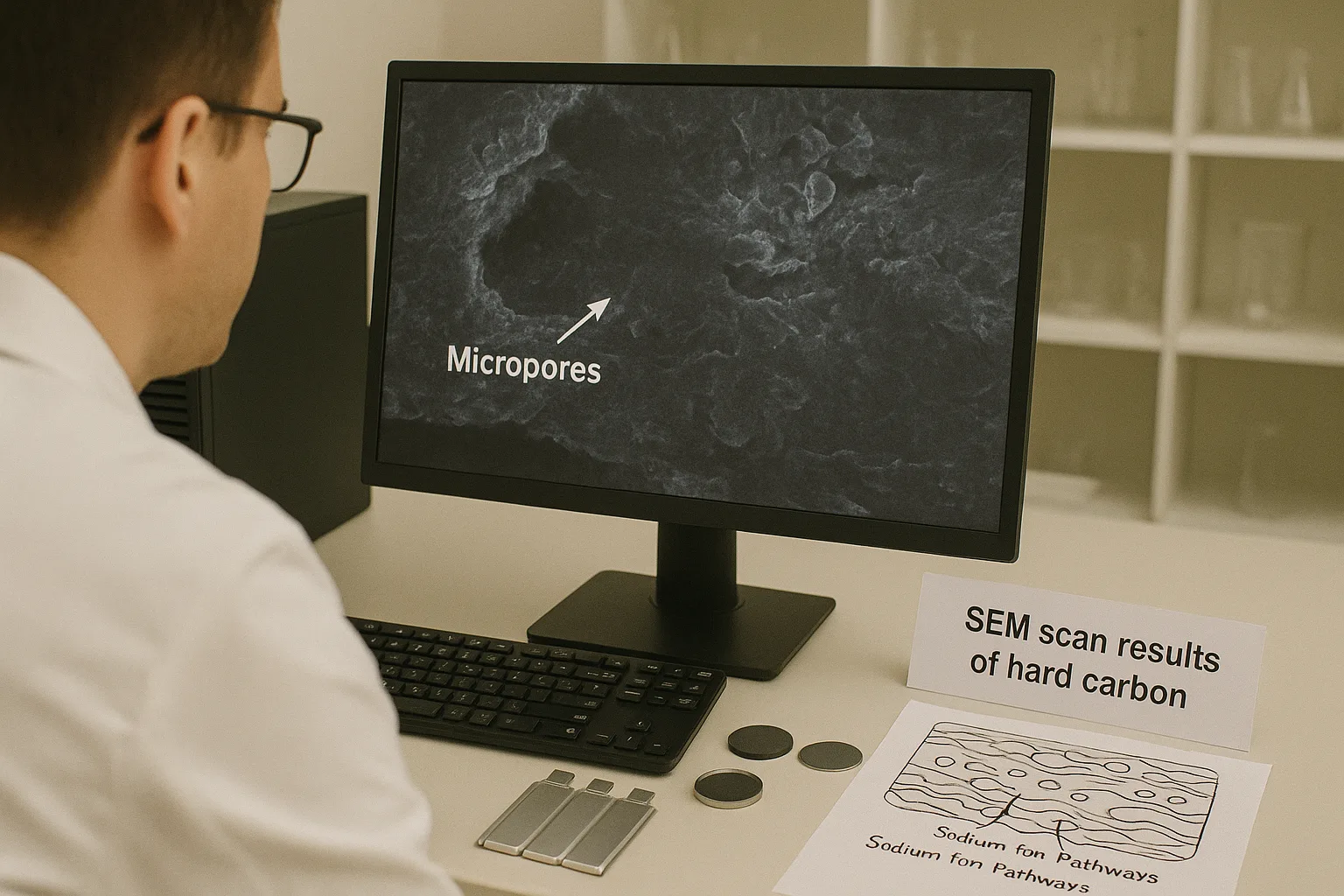
Structural Advantages of Hard Carbon
Hard carbon differs significantly from crystalline graphite:
- Micropores: Trap sodium ions at low voltage without structural collapse.
- Disordered structure: Offers flexibility for ion movement and fast charge/discharge behavior.
- Electrochemical performance: Supports high first-cycle efficiency and long life.
| Feature | Benefit for Sodium-Ion Anodes |
|---|---|
| Irregular structure | Easy insertion of sodium ions |
| Low intercalation voltage | Improves cell energy efficiency |
| High reversibility | Enables stable cycling and longer lifespan |
This makes hard carbon the top choice for current commercial sodium-ion batteries.
Which Cathode Materials Are Most Effective for Sodium-Ion Batteries?
Cathode materials largely define the energy density and safety of any battery—sodium-ion is no different.
The most effective cathode materials5 for sodium-ion batteries include layered transition metal oxides6 (like NaNiMnFeO₂), polyanionic compounds7 (like NaFePO₄), and Prussian blue analogs (PBAs), each offering different trade-offs in capacity, voltage, and cost.
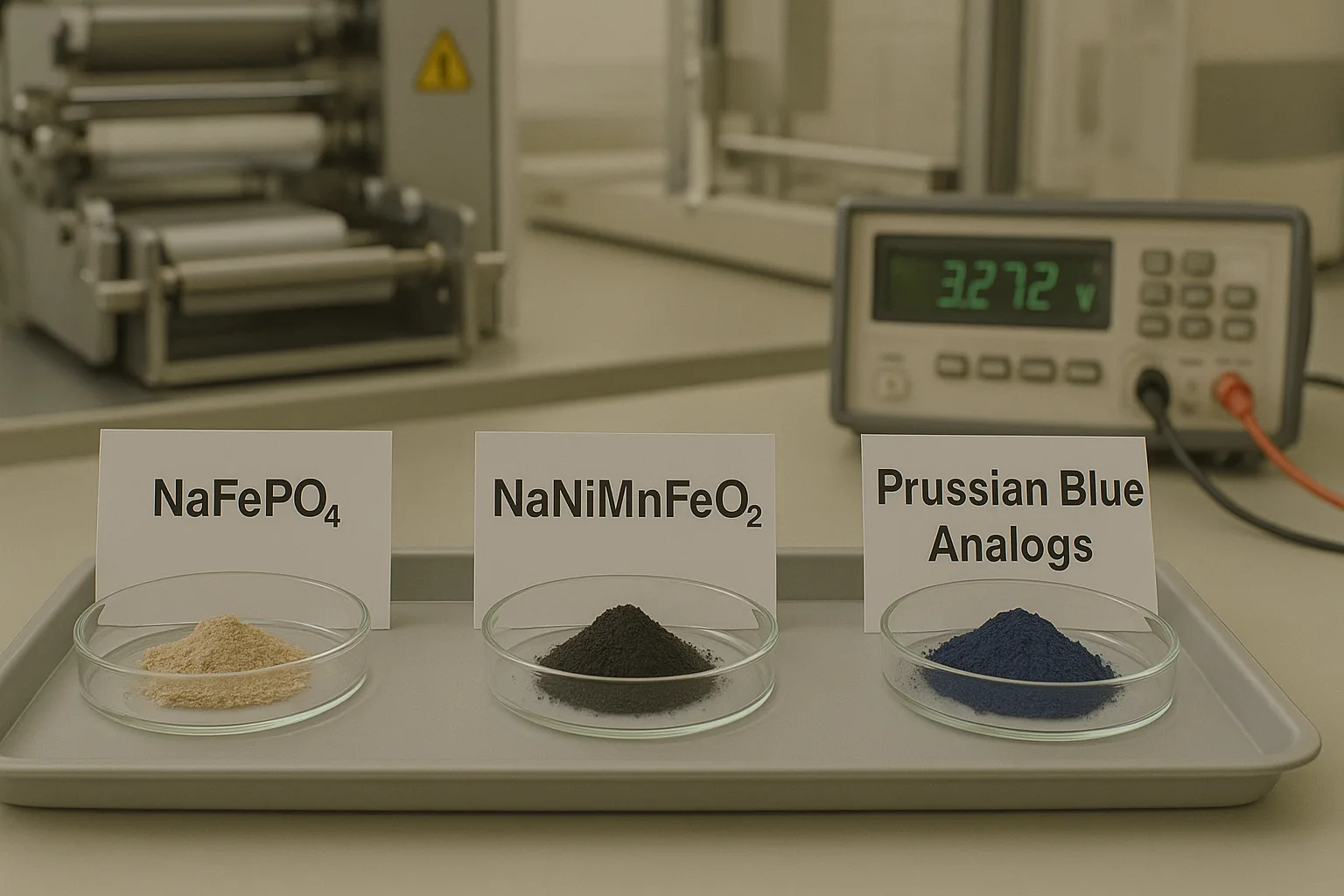
Comparing Sodium-Ion Cathodes
Here’s a simplified comparison of top cathode candidates:
| Cathode Type | Example | Pros | Cons |
|---|---|---|---|
| Layered Oxides | NaNi₁/₃Mn₁/₃Fe₁/₃O₂ | High capacity, decent voltage | Moderate structural stability |
| Polyanionic Compounds | NaFePO₄ | High safety, thermal stability8 | Lower voltage output |
| Prussian Blue Analogs | NaFe[Fe(CN)₆] | Low cost, fast ion kinetics | Lower energy density |
Each material type is suitable for different use cases—PBAs for low-cost grid storage, layered oxides for higher energy mobile applications.
Conclusion
Sodium-ion batteries rely on hard carbon anodes and sodium-based cathodes like layered oxides or NaFePO₄. These material choices balance cost, stability, and performance—laying the foundation for the future of affordable, sustainable energy storage.
-
Understand the significance of sodium ions in battery technology and their advantages. ↩
-
Explore how Hard carbon enhances sodium-ion battery performance and stability. ↩
-
Learn about the ongoing research and potential of Graphite in sodium-ion technology. ↩
-
Gain insights into the intercalation process and its impact on battery efficiency. ↩ ↩
-
Find out which cathode materials optimize performance and safety in sodium-ion batteries. ↩
-
Explore the advantages of layered transition metal oxides in enhancing battery capacity. ↩
-
Learn about the safety and stability benefits of polyanionic compounds in battery design. ↩
-
Discover the importance of thermal stability in ensuring battery longevity and safety. ↩

